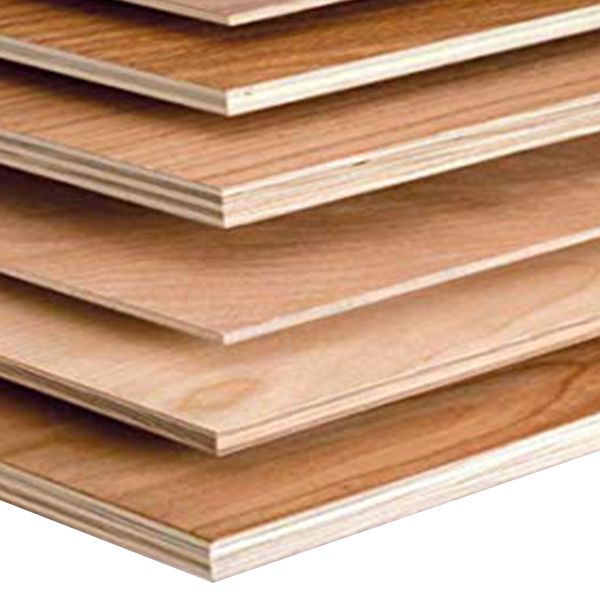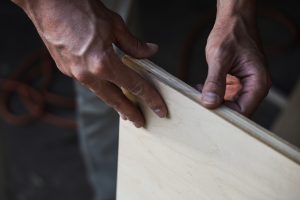
There are some simple guidelines that can help you determine a good piece of general plywood. The most important thing to look for is knot free general plywood, as well as a notch-free surface. Make sure the material has been rated for outdoor use and is resistant to moisture. Listed below are some other useful tips to help you judge a piece of general plywood. These tips should help you choose the right wood for your projects.
Is it free of knots
Is general plywood free of knots? The answer depends on the grade of the wood. B grade plywood is largely knot-free, with tight knots that are less than 1 inch in diameter. It also has a solid base and a slightly less smooth surface than A-cabinet grade plywood. Occasionally, B grade plywood will have small defects. C grade plywood, on the other hand, contains knots that are two to four inches in diameter and are of poor quality.
One of the most common types of plywood is A grade. A grade is light-colored, and it has no knots. A-grade plywood has no knots in the top layers. It may have minor flaws, such as putty or rough-cut veneer. D-grade plywood may have some knots that are 2 inches or larger. But it is still suitable for general construction. It is also shock-resistant.
Is it rated for outdoor use
There are several types of exterior plywood, and the two most common ones are ACX and CDX. The first two letters of these names refer to the construction grade of the plywood. The higher the grade, the more durable the product will be. CDX plywood is a popular choice for outdoor applications because it’s more durable than ACX. Depending on its use, the product may have veneer layers or high-density hardwood.
The highest quality plywood is graded by letter. Grade A is the best and most expensive, with the least amount of knots, holes, and repaired defects. CDX plywood is an inexpensive alternative to pine plywood, but it’s rougher on the edges and surface, making it better for down-and-dirty projects. It’s not waterproof, but it’s great for projects that require a strong foundation.
Another important feature of a high-quality plywood is its overall durability. C grade plywood has tight knots under an inch, and B grade contains more voids. C grade plywood may have knots as large as 1.5 inches, but it will not repair the defects. D grade plywood, on the other hand, is the lowest-quality type and may have knots that are 2.5 inches long. When shopping for plywood, you should avoid the lowest grade, as it’s unlikely that you’ll ever use the plywood.
The R-value of a material refers to its ability to provide insulation. The higher the R-value, the better its insulation properties. Manufacturers measure this value in laboratory settings, and the higher the R-value, the more durable the material. If the R-value is high, it means it’s more durable than lower-grade materials. But it doesn’t always mean it’s a better choice.
Is it rated for nail and screw holding capacity
Is general plywood rated for screw and nail holding capacity? This question has been a source of confusion for woodworking professionals for years. Previous studies have noted an increase in the mechanical properties of reinforced materials, including flexural properties and connection points. However, these tests have not evaluated the holding capacity of screws and nails in general plywood. Therefore, this study aims to investigate these issues. The results demonstrate that a general plywood is not rated for nail and screw holding capacity.
The strength of screws and nails can be compromised when the covering material is ripped or torn. This problem is commonly encountered in building construction, and limited studies have been conducted to determine the holding capacity of general plywood. However, a study conducted by Candan and Akbulut examined the flexural strength and resistance to screw and nail withdrawal of general plywood and other types. Although this is an important aspect, it remains a question that remains unanswered.
The density of plywood can be impacted by a variety of factors, including the wood species, layer number, nail size, and direction of grain. However, the density of general plywood is consistent across different samples. As such, the question of “Is general plywood rated for nail and screw holding capacity?” is a good place to start. This information will help you choose the right material for your project.
Is it rated for moisture resistance
What is the difference between exterior grade and interior grade plywood? Generally, exterior grade plywood is more durable than interior grade plywood. It features a rough sawn texture, and may not be grooved. This type is ideal for exterior applications because it can be stained or painted to match any style. The inner core is composed of an intermediate bond, and its moisture resistance rating is not affected by the surface treatment or the type of glue.
Marine plywood is specially made for marine environments. It is resistant to moisture and bonds easily to sealants. Exterior plywood is ideal for construction projects in damp areas, such as boat hulls, garages, and other outdoor structures. This type of plywood is usually made of Douglas fir and is rated as marine plywood. Both types of plywood are waterproof, but may not look as attractive as marine plywood. These types of plywood must be treated with a special sealant.
Exterior grade plywood is rated for outdoor applications. Its waterproof qualities are important for interior applications. While interior plywood is typically rated for exterior use, exterior grade plywood has little moisture resistance and will show visible blemishes and dents. Often made from cheap hardwoods, exterior grade plywood is durable enough to withstand wet conditions. Exterior grade plywood is waterproof and can be finished with paint or veneer.
Exterior grade plywood, on the other hand, uses adhesive to attach the veneer plys. It should not be labelled as pressure treated or “pressure treated wood.”
Is it rated for load capacity
What is the load capacity of general plywood? Span ratings are based on the thickness of the panel and the amount of weight that it can support. Plywood has a different strength depending on the type it is and the thickness. The tensile strength is affected by thickness, so it is important to check the specifications and pay attention to the recommended load capacity. The strength of general plywood can be determined by calculating the total area of the panel divided by 50 psf.
General plywood is not meant to support walls, but instead connects studs and supports the frame. In these applications, plywood is not as strong as wood, so it can serve a dual purpose. A sheet of plywood can support two or three hundred pounds, but it is not as durable as hardwood. This is why marine-grade plywood is often used for load-bearing purposes. But what if you need to make a large-scale structure?
General plywood is made from wood fibre sheets covered in resin. It has cross-graining, which minimizes the chances of wood splitting, shrinking, or warping. It is also composed of odd-numbered plies, which reduces the chance of warping. But how do you know if it is strong enough? Check the specifications of the plywood you’re planning to use. There are some guidelines that you should follow.
In general, 3/4-inch plywood is the most common type of plywood and can support a variety of weight. But you should avoid using plywood that is thinner than that. A 1/4-inch sheet will bend and not hold as much weight. Fortunately, there are other types of plywood available. You can even find tongue and groove plywood for heavier construction projects. The thickness of plywood you’re purchasing will depend on the type of project.

